This is my only family line with any renown at all. Captain John Hadden Askwith, Esq. (1782-1824), played a role in the Battle of Pulo Aura, a French attack on British merchant ships near Mauritius in 1804, and because of that victory his pockets were well-lined. John had spent a year imprisoned in Mauritius and was released in exchange for a French captain captured in the battle. John and his wife, Catherine Harrison, later spent a year in Madeira where he went to recover from various ailments picked up in the Mauritian prison. For his wife, John built Old Sleningford Hall (pictured below) in Ripon, Yorkshire, and they later rented the nearby Norton Coyers Estate, which was inspiration for Thornfield Hall of Jane Eyre fame. It’s pure speculation, but I imagine they did things like dress for dinner, hunt small game, and order people about. 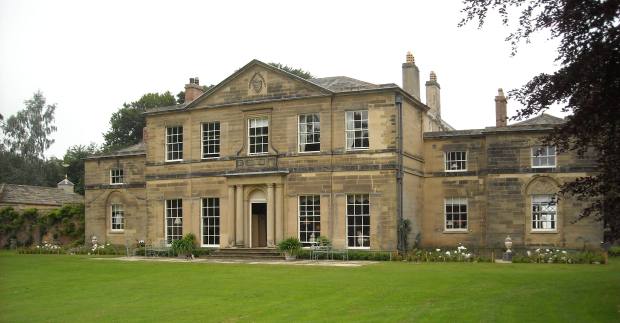
24 July 2008 (Old Sleningford, Askwith, Ripon) 088Ac
John and Catherine were such big shots that they were given the great honour of being entombed under the altar at the All Saints Church in Pickhill, Yorkshire (below). They died relatively young, orphaning 9 children, all under the age of 12.

The captain’s second-born was John Hadden Askwith II, which would make a fantastic soap opera name. He was a Manchester surgeon and my 4th great grandfather. John II had a private practice at Brunswick Place, worked as surgeon for the Pendleton Colliery, and was an executive member of the Salford (Manchester) chapter of the Order of Oddfellows. I bet he knew some great secret handshakes.
Either he didn’t inherit much, or dressing for dinner every night at Sleningford Hall wasn’t sustainable, because when he died in 1861, he left just £300 to his second wife, Eliza Milnes. Measuringworth.com tells me that’s worth £25,000 pounds in today’s cash, but represents £654K in economic power, which is a tidy sum, but not a vast fortune upon which to build an empire.
Below is the current street view of about where he was living on Oxford St. at the time of his second marriage. Not bad.
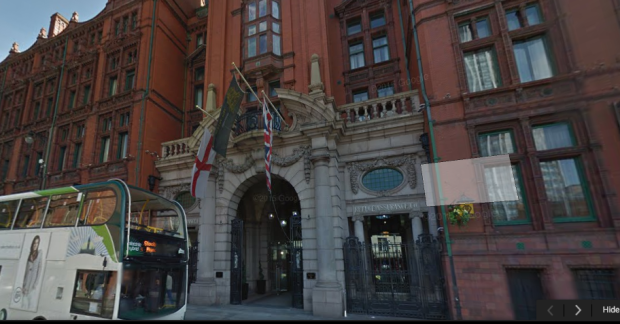
The first-born son of John Hadden Askwith II and his first wife Hanna Richardson was born in Manchester and christened at Manchester Cathedral in 1840. This was my 3rd great grandfather, William Askwith. His mother died shortly after his birth. His father remarried and had at least 14 more children: only two were still living by 1877, with at least eight having died in childhood, and the rest as teens or young adults.
William Askwith immigrated to Canada in 1858 and settled in Montreal. It’s possible he was a ‘remittance man’ whose wealthy family shipped him off to make way for other family members to inherit their wealth. Two of his half-siblings also came to Canada. His brother John came sometime later, probably in 1866. He married in Montreal in 1867 and died exactly one year later – William was a witness at both events. William’s half-sister Catherine died when her ship, the Anglo-Saxon, sunk off the coast of Cape Race, Newfoundland. It was 1863. She was 17 and I assume she was coming to join her brother. She was a cabin passenger, and it’s likely she had cash and other valuables stowed on her person, which would have also met a watery fate.
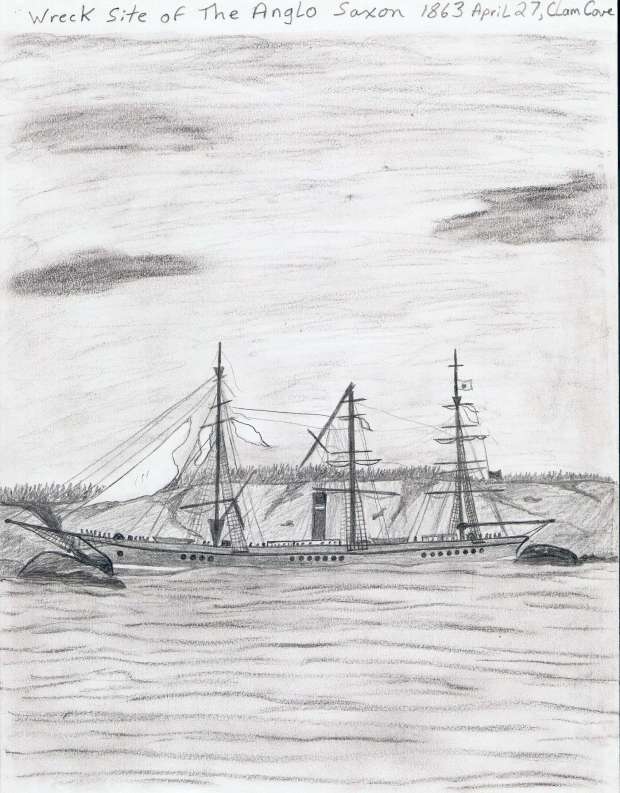
John Hadden Askwith II’s children that made it to adulthood: 3/15
In 1859 in Montreal, at the age of 19, William Askwith married Margaret Quinn, an illiterate Catholic woman who was born in Ireland and about whom very little is recorded (side note: based on some DNA matches, I think she was from Adare in co. Limerick). They were married in St. George’s Anglican church. Their first few children were baptized in the Anglican church and later baptized by their mother in the Roman Catholic church – I guess she wasn’t one to hedge her bets. Their later children were just baptized Catholic. In census forms, William always identified himself as being of the Church of England, while the rest of his family were Roman Catholic.
William’s oldest daughter was Hannah Askwith, my great-great grandmother. She had at least 9 siblings, but between 1877-1890, 7 of her siblings and her mother died. I’m not sure what they all died from, but I know there was a smallpox epidemic in the 1880s in Montreal, so I’m guessing that had something to do with their untimely demises.
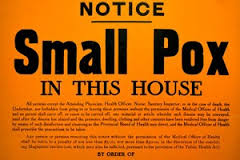
William Askwith and Margaret Quinn’s children that made it to adulthood: 3/12 (with 3 having died in their late teens)
Although he’d been born into a well-to-do family, it seems he didn’t bring much of that money with him. He and his large family lived in St Antoine’s Ward in Montreal, parts of which were rather swish. It looks like the Askwiths tended to live closer to St Anne’s and further from Mont Royal – so they weren’t in such a upmarket area, but they weren’t exactly in shanties. Around 1886 he purchased a home on Canning St, which remained in the family for 30 more years. In the 1911 census William earned $700. According to inflation, that’s only $17,500 as a foreman machinist, but he did have a servant living with him and she made $100, so the inflation calculator is a bit suspect. Either way, he certainly didn’t die with the money he was born into. Although he wasn’t wealthy, he was almost certainly educated. In 1879 he submitted a patent for a water-powered pulley system, seen below.
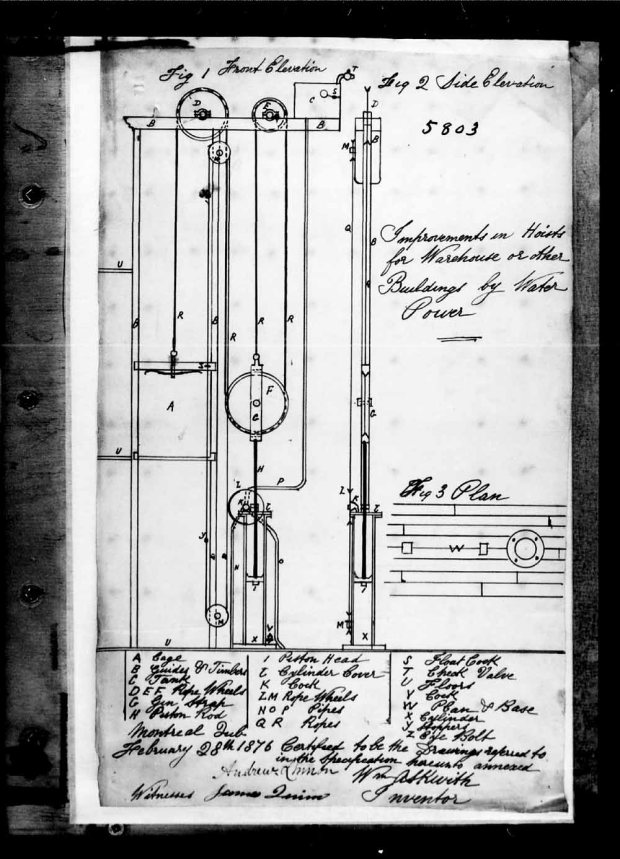
Although his siblings, wife, and children often died very young, William himself lived to the respectable age of 76. His nephew, Percy Taugher, recounted an early boyhood recollection of William’s funeral in which a horse-drawn black-creped hearse carried the coffin; the horses were decorated with large black plumes (a similar ride is pictured below). The family, including young Percy, walked behind on a warm May day. Percy remembered wearing dressed up short pants for the occasion. At age 3, he was too young to qualify for long pants.

William was buried in Notre Dame de Neiges cemetery aside his wife, who had died 32 years earlier, and a number of their children. For him to have been buried there at the time, he would have had to convert to Catholicism. He would have also had the option to be laid to rest beside his half-brother in the Mont-Royal Protestant cemetery on the other side of the fence. This is their original headstone, which has since been replaced.

Though certainly with a lion’s share of grief, with so many of his loved ones dying young, William lived a fascinating and adventurous life. Long after her death, his wife remained dear to him, and by all account his family was loyal and close-knit. Although he financial legacy did not live on, his life story has endured.
(I’m extremely grateful for my “cousin” Howard Askwith’s help and information. His inexhaustible interest in family history is invaluable. Any errors or omissions are entirely my fault, not his)